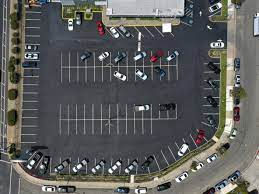What is my trade worth?
- Jaime Poulin
- Apr 24, 2022
- 4 min read

Establishing an appropriate trade in value prior to obtaining quotes is a good idea. It is also amazingly difficult to figure out. In my training career, one exercise I did with my management students was to have all of the managers appraise my car at the same time without comparing notes. Typically I would be driving a fairly late model rental car. In EVERY situation, all of the appraisals would drastically vary and sometimes by thousands of dollars. Why? The human factors of bias and preference.
Some vehicle appraisers are conservative, some generous and some pay more attention to vehicle condition than others. It is an incredibly thought intensive task to appraise a vehicle and usually something that we are called upon to do in a matter of minutes. Most customers today want the information now, not an hour from now. Imagine having to establish a precise value for an automobile (tens of thousands of dollars) you have never seen before and have no knowledge of its care and maintenance. You have only a few minutes to do it and you have to scan market reports, auction reports, book values, vehicle history reports and use your own broad knowledge. It's terrifying and we do it every day.
So how are you going to do it? KBB is generally considered the household name in consumer appraisals. They have done a great job of branding themselves as such and most customers will at least begin their research there. And generally, most customers are going to use the value of average trade in excellent condition. This is an inherently flawed approach. why? A number of reasons.

Condition, Vehicle Maintenance history, Prior Damage and Market Days Supply are generally the 4 biggest considerations I look to when appraising.
If a vehicle looks "clean", if the interior and exterior are rust, damage, and dirt free, if the vehicle has no foul odors such as cigarettes or junk food, if the upholstery is wear free and not stained or faded and if all the factory options are in fine working order, then It is worth more than one that has flaws. And every flaw has to be considered and accounted for. The next customer that considers purchasing it is going to want those things taken care of. Tire tread depth and condition is a huge factor. You should consider not whether your tires will pass state inspection but whether or not the next owner would want them replaced. Generally, I have replaced all 4 tires on a vehicle whenever the tread depth is less than 60%.

Maintenance records are important. History is no mystery. Carfax now reports every maintenance performed on your vehicle. Being able to show that history to the next customer is highly beneficial. And a lack of history is highly detrimental. Even if you perform your own maintenance, keep detailed records and receipts in a comprehensive journal.

Market days supply is likely the most critical data when a dealer is establishing value. Market days supply refers to the number of days a dealer is likely to have your vehicle in inventory prior to selling it at retail. The lower the number, the more desirable the vehicle. If I know I am going to "turn" a trade in vehicle in thirty days I am more likely to give a high number than if I know it will take 60. So basically the more common a vehicle, the less desirable. We use software that analyzes the market looking for vehicles just like yours and gauging the average amount of time the "ad" is on line. It is very accurate data.

Prior Damage history. I cannot remember the last customer that I had that did not ask to see the Carfax Vehicle history report on the car they were considering.
While prior damage can lower the vehicle appraisal considerably, most appraisers will generally forgive "minor" damage. This is particularly true on an older vehicle. The older the vehicle, the less consideration I put on prior damage.
HOW the damage appears on the history report is very impactful. For example, if the legend states "Involved in high speed head on collision, vehicle disabled, air bags deployed, towed from scene", then we are going to deduct a fairly high percentage of the value. No one is going to want that vehicle unless the price is "right". If the legend says "minor accident, backed in to another car", then the deduction is going to be minimal. The quality of the repair is always given great consideration. If it is an excellent repair, and the average person would not notice it, then it is generally not deducted for additionally.
Mileage deductions and additions can be misleading and cause you to over value your vehicle. I have seen vehicles that had a baseline value of $15000 also have an additional add for low miles as much as half of the value. It is not a reasonable expectation. It is just a flaw in the algorithms. I have also seen where a vehicle with 180,000 miles was given the same value as a vehicle with 300,000. Also a flaw of the algorithms. Whoever wrote the program simply did not consider that a car would go that many miles.
In summary, there are a million different sources out there willing to offer you an opinion. Be sensible and honest with yourself about the considerations around value, look at your car in a practical fashion, and you will likely arrive at a fair figure.
Until next time- Skipper



Comments